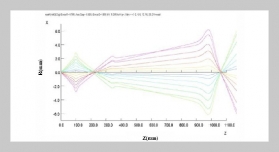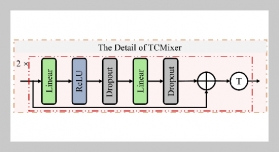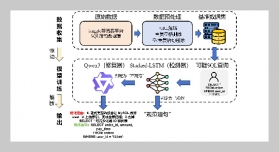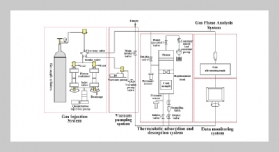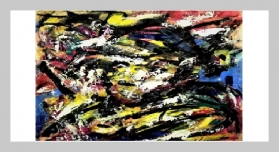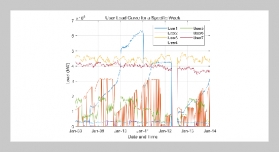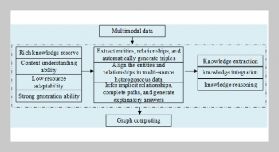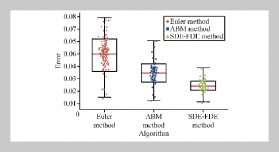- [1] Z. Jiang, B. Shi, F. Du, B. Xue, M. Lei, Z. Yang, and H. Sun, (2022) “Intelligent Plant Cultivation Robot Based on Key Marker Algorithm Using Visual and Laser Sensors" IEEE Sensors Journal 22(1): 879–889. DOI: 10.1109/JSEN.2021.3130607.
- [2] G. Dwyer, F. Chadebecq, M. T. Amo, C. Bergeles, E. Maneas, V. Pawar, E. V. Poorten, J. Deprest, S. Ourselin, P. De Coppi, T. Vercauteren, and D. Stoyanov, (2017) “A Continuum Robot and Control Interface for Surgical Assist in Fetoscopic Interventions" IEEE Robotics and Automation Letters 2(3): 1656–1663.DOI: 10.1109/LRA.2017.2679902.
- [3] H. Huang, J. Zhang, B. Xu, G. Liu, Q. Luo, and X. Wang, (2021) “Topology optimization design of a lightweight integrated manifold with low pressure loss in a hydraulic quadruped robot actuator" Mechanical Sciences 12(1): 249–257. DOI: 10.5194/ms-12-249-2021.
- [4] J. Shang, D. Fang, Z. Luo, R. Wang, X. Li, and J. Yang, (2021) “Design and analysis of a hydraulic drive downhole traction in-pipe robot based on flexible support structure" Proceedings of the Institution of Mechanical Engineers, Part C: Journal of Mechanical Engineering Science 235(1): 18–27. DOI: 10.1177/0954406220914319.
- [5] H. Dawid and M. Kopel, (1998) “On economic applications of the genetic algorithm: A model of the cobweb type" Journal of Evolutionary Economics 8(3): 297–315. DOI: 10.1007/s001910050066.
- [6] H. C. Husada and A. S. Paramita, (2021) “Analisis Sentimen Pada Maskapai Penerbangan di Platform Twitter Menggunakan Algoritma Support Vector Machine (SVM)" Teknika 10(1): 18–26.
- [7] H. Chen, J. Duan, R. Yin, V. V. Ponkratov, and J.W. G. Guerrero, (2021) “Prediction of penetration rate by Coupled Simulated Annealing-Least Square Support Vector Machine (CSA_LSSVM) learning in a hydrocarbon formation based on drilling parameters" Energy Reports 7: 3971–3978. DOI: 10.1016/j.egyr.2021.06.080.
- [8] J. Zhang, J. Sun, and H. He, (2022) “Clustering Detection Method of Network Intrusion Feature Based on Support Vector Machine and LCA Block Algorithm" Wireless Personal Communications 127(1): 599–613. DOI: 10.1007/s11277-021-08353-y.
- [9] J. Song, C. Yu, and S. Li, (2021) “Continuous prediction of onsite PGV for earthquake early warning based on least squares support vector machine" Acta Geophysica Sinica 64(2): 555–568. DOI: 10.6038/cjg2021O0193.
- [10] P. Bose, S. Dutta, V. Goyal, and S. Bandyopadhyay, (2021) “Leaf Diseases Detection of Medicinal Plants Based on Support Vector Machine Classification Algorithm" Journal of Pharmaceutical Research International 33(42A): 111–119.
- [11] R. Farkh, H. Marouani, K. Al Jaloud, S. Alhuwaimel, M. T. Quasim, and Y. Fouad, (2021) “Intelligent autonomous-robot control for medical applications" Computers, Materials and Continua 68(2): 2189–2203. DOI: 10.32604/cmc.2021.015906.
- [12] T. Togias, C. Gkournelos, P. Angelakis, G. Michalos, and S. Makris. “Virtual reality environment for industrial robot control and path design”. In: 100. Cited by: 11; All Open Access, Gold Open Access. 2021, 133–138. DOI: 10.1016/j.procir.2021.05.021.
- [13] I. Galushko, V. Salmina, and G. Makaryants, (2019) “DEVELOPMENT OF A TEST BENCH FOR TESTING THE UNDERWATER ROBOT CONTROL SYSTEM WITH VARIABLE GEOMETRY OF THE BODY" Journal of Dynamics and Vibroacoustics 5(3): 6–13.
- [14] G. Kunert, T. Pawletta, and S. Hartmann, (2020) “Reduction of Complexity in Q-Learning a Robot Control for an Assembly Cell by using Multiple Agents" SNE Simulation Notes Europe 30(3): 117–124.
- [15] T. Mikada, T. Kanno, T. Kawase, T. Miyazaki, and K. Kawashima, (2020) “Suturing support by human cooperative robot control using deep learning" IEEE Access 8: 167739–167746. DOI: 10.1109/ACCESS.2020.3023786.
- [16] Z. Feng, (2021) “An image detection method based on parameter optimization of support vector machine" International
Journal of Circuits, Systems and Signal Processing 15: 306–314. DOI: 10.46300/9106.2021.15.35.
- [17] E. Samsudin, (2021) “Modeling Student’s Academic Performance During Covid-19 Based on Classification in Support Vector Machine" Turkish Journal of Computer and Mathematics Education (Turcomat) 12(5): 1798–1804.
- [18] D. Gunawan, D. Riana, D. Ardiansyah, A. F., and S. Alfarizi, (2020) “Komparasi algoritma support vector machine dan naïve bayes dengan algotima genetika pada analisis sentimen calon gubernur jabar 2018-2023" Jurnal Teknik Kompute 6(1): 121–129.
- [19] L. Luthfiana, J. C. Young, and A. Rusli, (2020) “Implementasi Algoritma Support Vector Machine dan Chi Square untuk Analisis Sentimen User Feedback Aplikasi" Jurnal Ultimatics 12(2): 125–126.
- [20] R. Farkh, H. Marouani, K. A. Jaloud, S. Alhuwaimel, and Y. Fouad, (2021) “Intelligent Autonomous-Robot Control for Medical Applications" Computers, Materials and Continua 68(2): 2189–2203.
- [21] S. Lee and J. H. Kim, (2020) “Improvement of the Support Vector Machine-based Monte Carlo Simulation for Calculating Failure Probability" Transactions of the Korean Society of Mechanical Engineers, A 44(4): 269–279. DOI: 10.3795/KSME-A.2020.44.4.269.
- [22] J. Liu, P. Wang, M. Li, W. Guo, F. Zha, L. Sun, and P. Zheng, (2020) “A multiplicative noises and additive correlated noises cubature kalman filter and its application in quadruped robot" IEEE Access 8: 162290–162301.DOI: 10.1109/ACCESS.2020.3021494.



